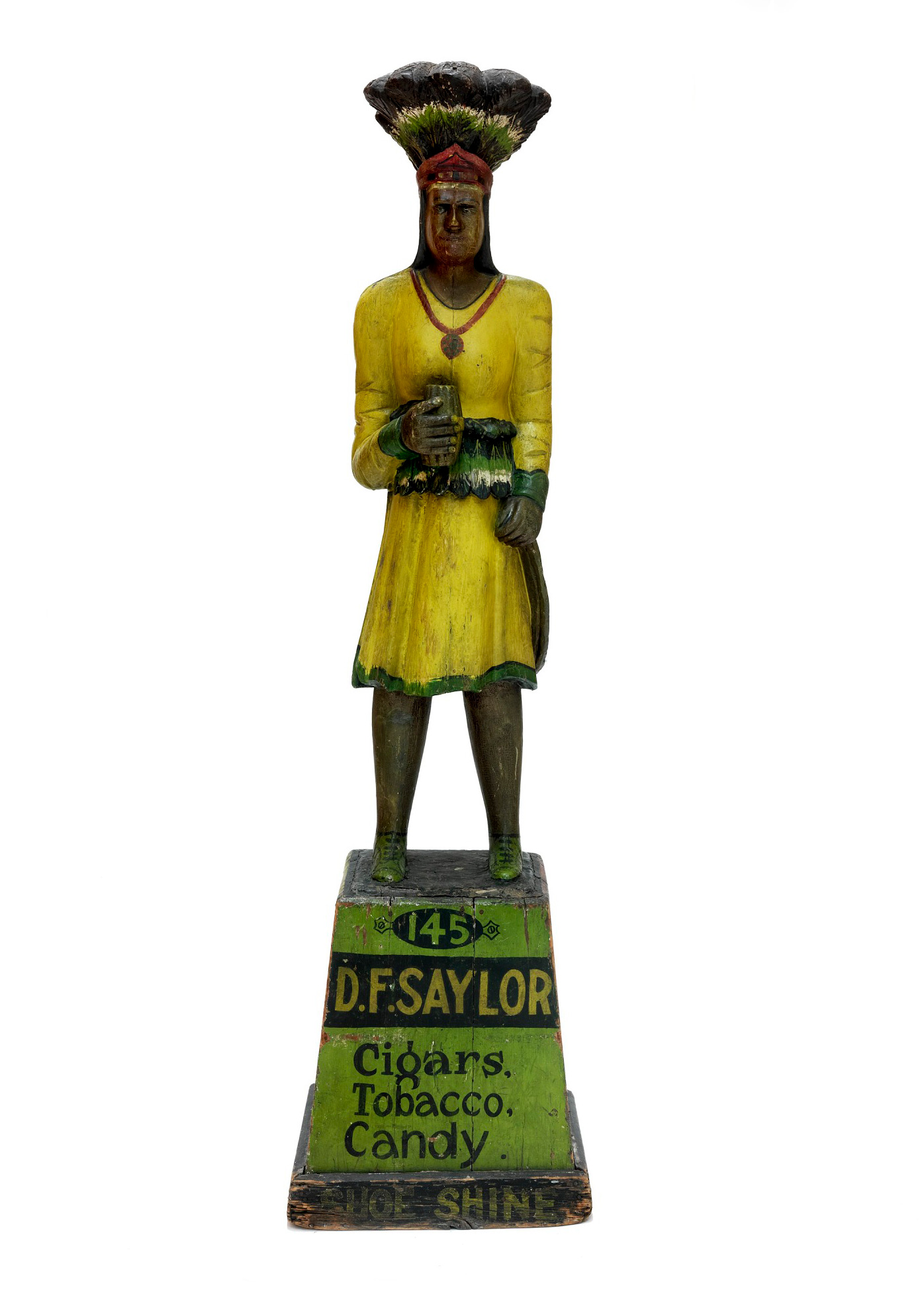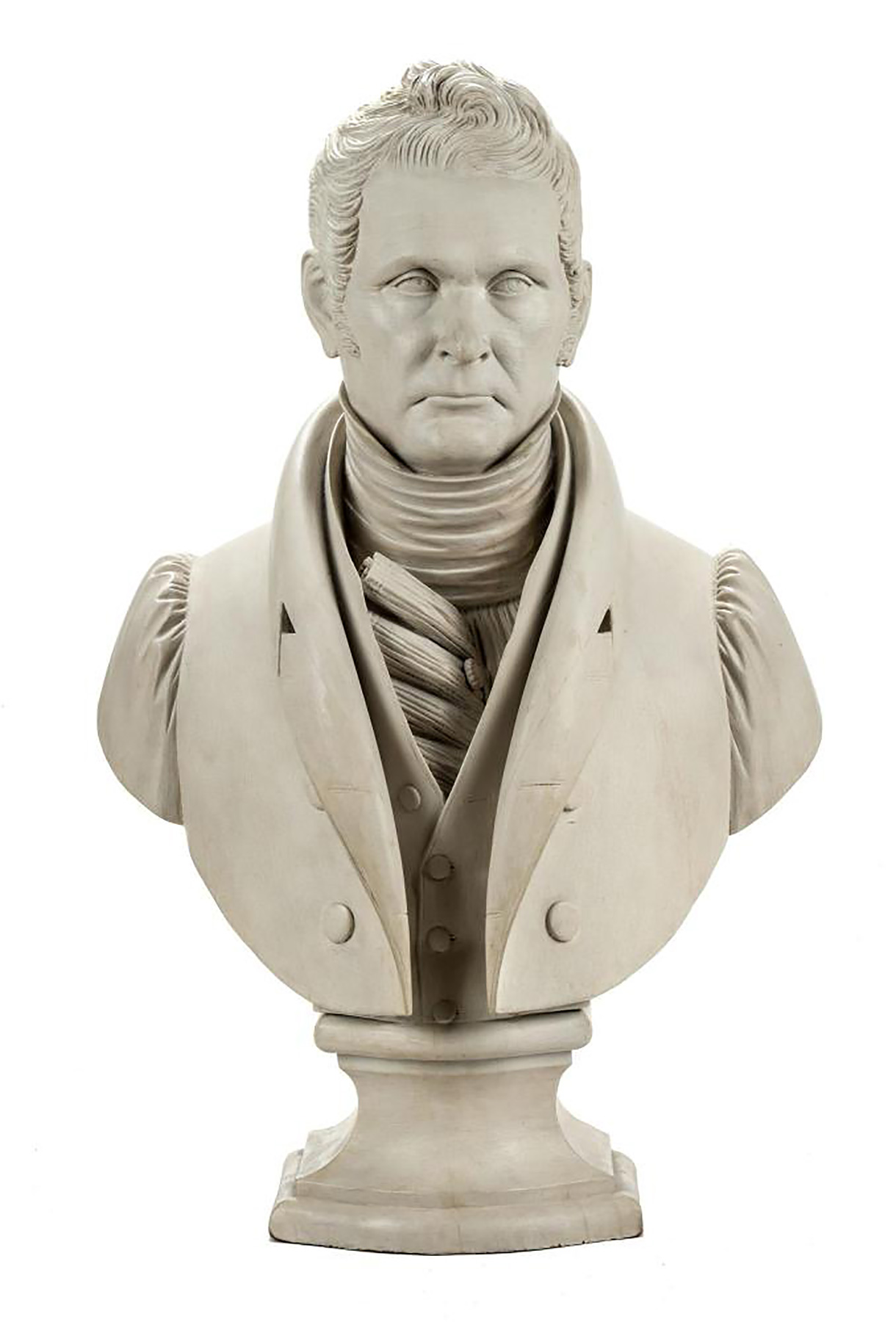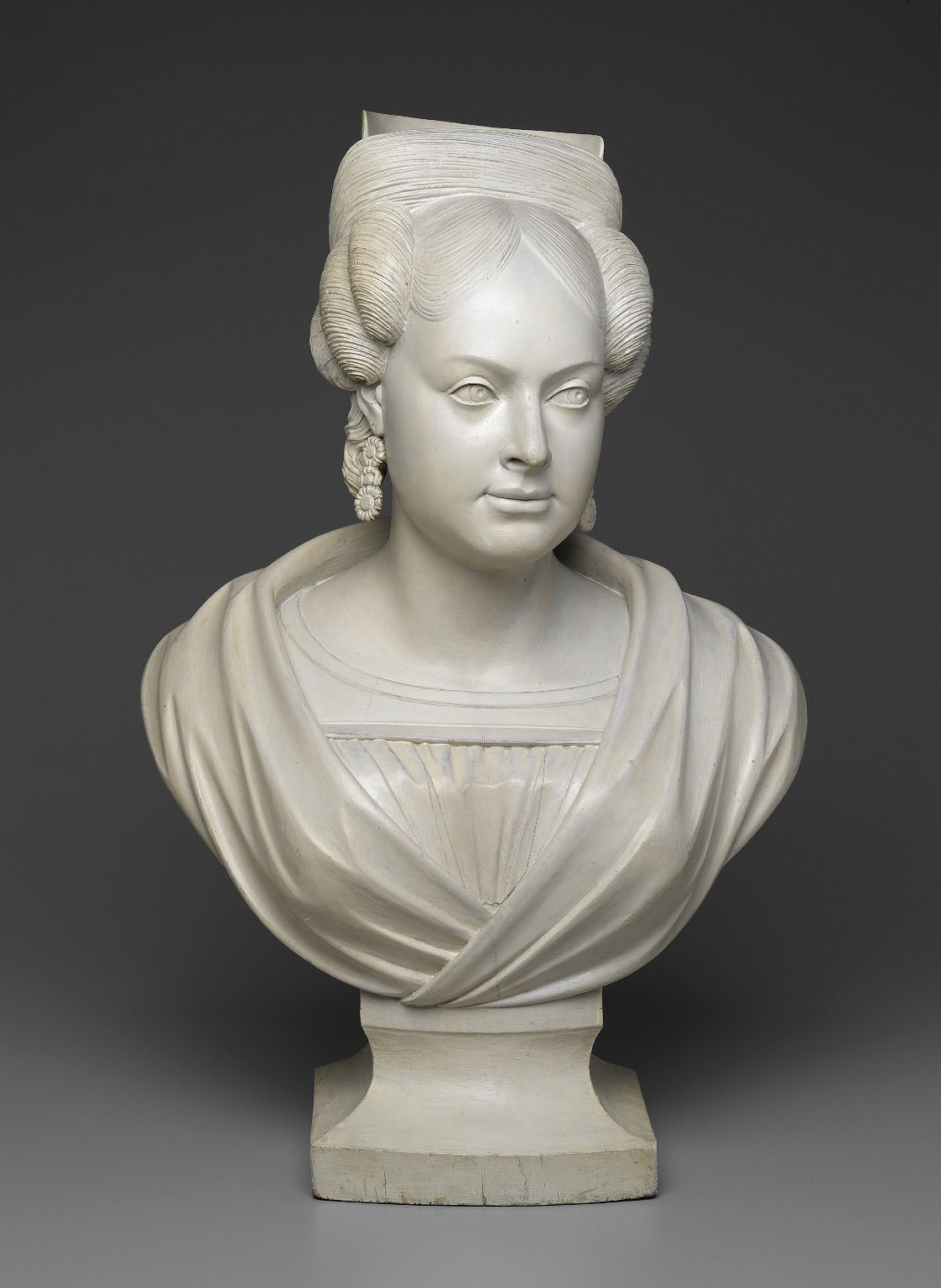“Carving” Out a Career
New York’s Wooden Folk Art and Charles J. Dodge
Among nineteenth-century carved wooden show figures—commonly described in the past as “cigar store Indians”—BHS’s example “sits” apart from the rest. Traditional examples typically follow a standard format: a caricatured and nondescript “Indian” man, standing, simply carved, and elaborately painted. Stripped of the paint that once adorned it, BHS’s seated show figure is nevertheless spectacular, the product of a highly-skilled woodworker.

Shop Figure, late 19th or early 20th century
65.0993
The Eleanor and Mabel Van Alstyne American Folk Art Collection
National Museum of American History
BHS’s show figure has long been identified as the work of New York City ship carver Charles J. Dodge (1806–1886). A second generation wood sculptor, Dodge trained in the shop of his father, Jeremiah, and actively pursued the trade from the 1820s through the late 1850s.
Other known wood sculptures attributed to Dodge attest to his skill. Two wooden portrait busts—one of Dodge’s father Jeremiah; the other identified as Dodge’s wife—are expertly carved, with facial features sensitively rendered, and realistic fabric and hair. Along with BHS’s show figure, these artworks are of greater quality than most show figures of the period.

Portrait Bust of Jeremiah Dodge, circa 1835
Attributed to Charles J. Dodge
1952.349
New York Historical Society

Portrait Bust of Mrs. Charles Dodge, circa 1830-40
Attributed to Charles J. Dodge
60.36
Brooklyn Museum of Art
While it is certainly possible that Dodge is the artist of the show figure, new research encourages scrutinizing that long-held attribution. Certain details, including the style of the chair upon which the Native American figure is seated, indicate the show figure might have been carved after Dodge retired from the carving trade. The rustic, tree bark appearance of the chair is typical of the Adirondack furniture craze, not popular in the United States until about 1880. Additionally, New York City directory records indicate that Dodge transitioned from a career as a wood artist in the mid-1850s. In the final decades of his life, he listed his occupation as a commissioner for the New York City Tax Department.